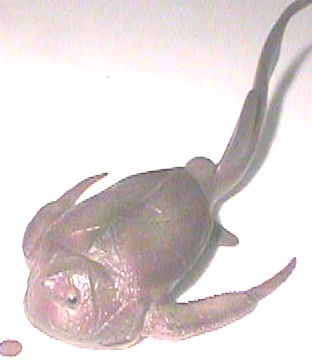![]()
![]()
| Devonian armoured fish are classified as Placodermi
with more than 200 genera. Early reconstructions depicted them as jawless
fish but it is now known that they did in fact have jaws and are quite
probably related to sharks. Placoderms definitely look very strange by
today's standards as the only modern organism that even slightly resembles
these fish is the turtle. Placoderm means plated skin, as they are named
for their heavy armour and dermal bone which formed large shields on the
head and thorax.
The Placoderms lived from the late Silurian to the end of the Devonian when they became extinct. The earliest detailed study of placoderms was by noted Swiss palaeontologist Louis Agassiz who published a five-volume set entitled Research on Fossil Fishes between 1833 and 1843. In the early 1930s Swedish Professor Erik Stensio of the Natural History Museum in Stockhom began looking at placoderms in great anatomical detail. Stensio developed 3-dimensional models of placoderm skulls showing canals for nerves, arteries and veins. His work placed placoderms as true jawed fishes closely related to modern-day sharks. |

Bothriolepis model; courtesy of the Canadian Museum of Nature. Photo by Annetta Markussen-Brown |